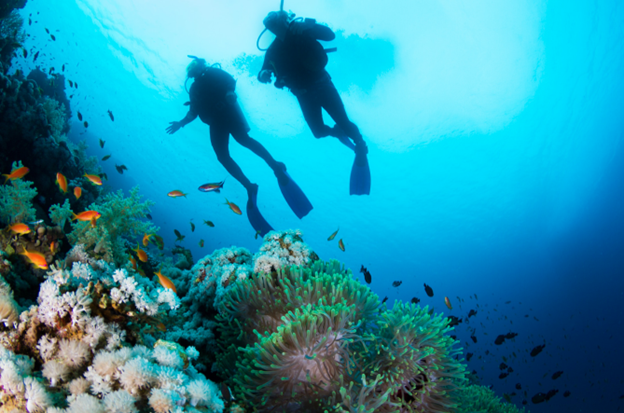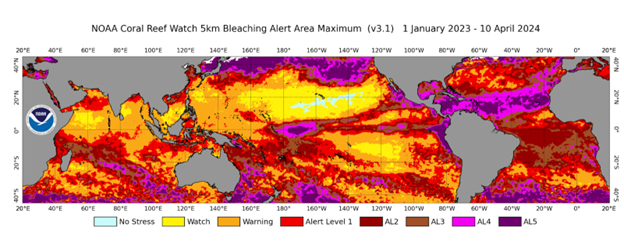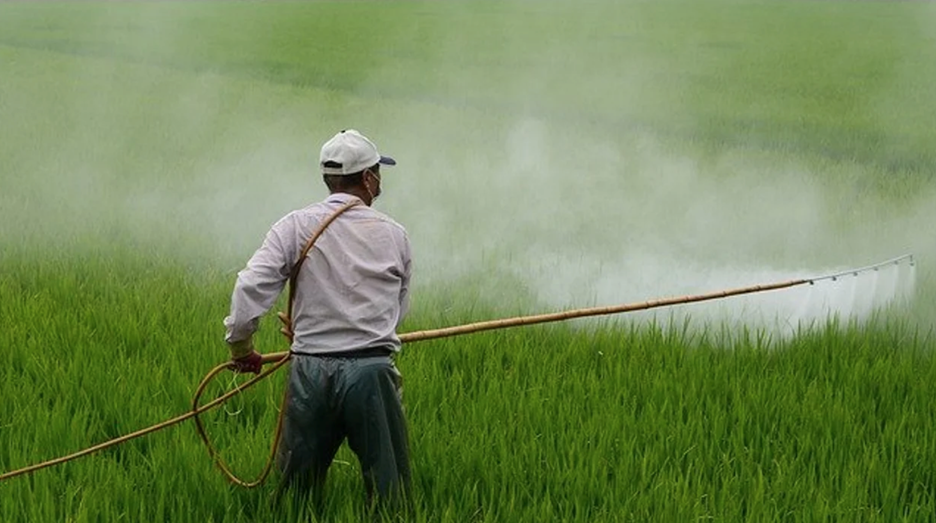Five years ago today, fifteen year old Liam Warner’s life changed forever. That fateful day was the first time Liam dove into the magnificent waters of Australia’s Coral Sea. He came face to face with spotted eagle rays, vibrantly blue Mandarin Fish, and most importantly the golden Staghorn coral that formed the Great Barrier Reef. "This can’t be real," he thought.
He had never been so enthralled by anything in his life. He felt like he was swimming in watercolors, blessed by the unique species that swam past him. He wished he could stay there forever, live among the turtles, be one with the sharks, but alas he needed to return to shore. That experience stayed with him, guiding his studies and passion for the ocean; from that day forward, he vowed to return each year.
And so he did. Liam Warner returned every year to the reefs, his safe haven, his home. However, the Great Barrier Reef was not the same as it had been the first time he visited. The reefs no longer held the chromatic, lively, corals and creatures he came to love, but instead were tainted by devastation. The colors seeped out of the Staghorn coral, the fish population shrank, and his heart broke.


Coral reefs are incredibly diverse ecosystems that provide various resources for one-fourth of the ocean’s marine species which in turn support humans. “[Coral reefs] offer shelter for reproduction, so they’re really important for fish species,” said Geraldine Keat, a Life Science researcher at Stanford University. “They serve humans for tourism and fisheries, giving people livelihood. And they’re important for flooding and storm protection as huge waves can break on the reefs and protect us.”
Corals are organisms that are composed of thousands of tiny animals called polyps, which grow and form colonies. Coral receive their color from algae (zooxanthellae) that inhabit the coral’s tissues. The coral and zooxanthellae have a symbiotic relationship. The corals offer protection to the algae and through cellular respiration they provide water and carbon dioxide that the algae uses to perform photosynthesis. Photosynthesis provides corals with oxygen, sugars, and amino acids needed to survive and form calcium carbonate (CaCo3) that make up the coral’s skeleton.
This relationship is crucial to coral survival and health of the ecosystem. “If they don’t have the symbiosis and teamwork to gather the nutrients both of them need, they are going to die,” says Keat. When a coral becomes stressed from changes in water temperature, acidification, or pollution, it forces out the algae and becomes white; this phenomenon is known as coral bleaching. It's crucial humans act now to prevent further bleaching events and stressors to the coral’s environment.

As tourism increases, floods of people are visiting beaches, diving and marveling at the beauty of coral reefs. However, many fail to register the potential harm they’re causing the coral by wearing sunscreen. Sunscreens contain either organic compounds such as oxybenzone and octocrylene or inorganic compounds including zinc oxide and titanium dioxide. These compounds absorb and reflect UV rays thereby protecting human skin from cell damage and unsafe exposure to solar radiation. However, while buffering the UV rays, “these molecules can be metabolized by [corals] and become toxic. This differs from compound to compound and sometimes it's not only toxic to the coral but to the algae and the effects can get amplified through the algae,” Keat says.
These chemicals can damage DNA, skeletal growth, and reproduction. A study reported that sunscreens “induce the lytic viral cycle in symbiotic zooxanthellae with latent infections.” This causes the corals to become stressed and expel their symbiotic algae which induces coral bleaching and puts them in danger of dying.
In response to this recent concern, sunscreen companies have started removing harmful chemicals and labeling their new products as “reef safe.” Nevertheless, no sunscreen is completely safe for corals. “Avobenzone, which is a replacement for oxybenzone, kills coral faster,” stresses Keat. The best way to protect our oceans and corals is to simply wear clothes and hats to protect against UV rays.
Sunscreen is not the only thing polluting the seas; pesticide and fertilizer runoff are also causing great harm to corals. Pesticides are used on farms to kill insects that eat the crops while fertilizers are important for plant growth. When it rains these pesticides from farms runoff into the watershed, which ends up in the ocean. Fertilizers contain nitrogen, phosphorus, and potassium which when they end up in the oceans can cause algae overgrowth that damages and smothers the coral. Furthermore, too much nitrogen can cause issues in fertilization rates and spread diseases. Pesticides can be toxic to coral larvae, which are critical for the reproduction and regeneration of coral reefs. And they can prevent corals from receiving the necessary nutrients to survive by negatively affecting the photosynthetic algae that live in the reefs.

As scientists continue to work and understand corals and ways to protect them, we as a society must do our part too. We must take caution when going to the beach, making sure to wear UV protective clothing and only using sunscreen without toxic chemicals if we must go swimming. At home and in our farms we must be mindful and use organic pest management solutions rather than synthetic pesticides. And especially refrain from using pesticides if it's going to rain soon.
Addressing climate change is also crucial to protecting the sea. "Rising sea temperatures are responsible for huge coral die-offs as it causes the ocean to get more acidic and therefore the coral structures are more prone to break and degrade and can’t recuperate from the losses,” says Keat.
To combat this issue, replanting kelp and restoring coastal vegetation is crucial as kelp is a major carbon sink. Carbon sequestration helps reduce the CO2 in the atmosphere thus lowering ocean temperatures. Reducing our carbon footprint by conserving water, energy, and finding clean transportation methods can also help mitigate the effects of global warming.
For years, coral reefs provided beauty and provided us with so many resources and now we must give back to the community that we harmed. We must spread awareness and fight for their preservation. As Keat argues, “the best thing we can do to help is to understand what’s going on.”




